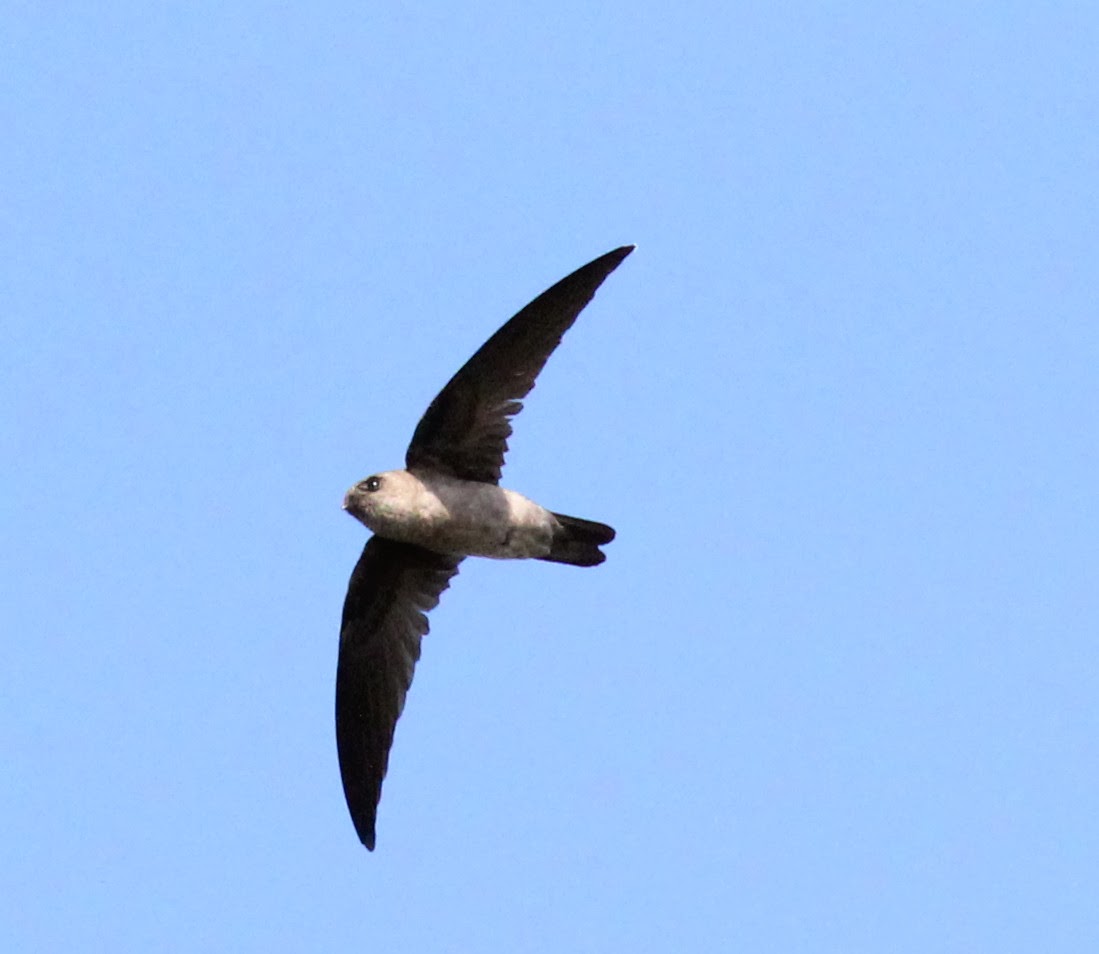I decided to volunteer myself for one day in this year's raptor watch at Tanjung Tuan. The spring migration of raptors to their northern breeding grounds had already begun in early February but things look a bit slower in this initial stage. Perhaps the migration might just peak from mid March to early April this year.
Setting up the tents before the incoming raptors.
Without the tents one might probably be "roasted" up there as the mercury went up to 35 Celsius in the afternoon. Perhaps the sun worshipers might love this occasion for a good tanned. We also have Cik Nur Atiqa a Conservation Officer from MNS to assist in the count for the first time.
On a clear day you could see Tanjung Rupat in Indonesia across the Straits of Malacca from this point.
We have only two scopes this time but it was more than sufficient in the absence of many raptors.
 |
| Purple-Naped Sunbird |
On my way up i saw this sunbird. Decided to take its photo as this was the first time i have seen it at this location.
 |
| Pink-Necked Green Pigeon (Treron Vernans) - Male |
 |
| Javan Myna |
A flock of Javan Mynas and a lone Common Myna congregating on a dead tree.
 |
| Asian Dollar Bird |
They were seen communicating with each other which then ended up with one chasing the other. A lovey dovey pair indeed.
 |
| Common Myna |
A pair of residence Common Myna
A sail boat with a British flag on board - Ahoy there !
 |
| Swallowtail Moth (Lyssa Zampa) |
 |
| Barn Swallow |
At about 10.30am, came the first migrating raptor - a falcon to be exact.
 |
| Peregrine Falcon (Japonensis) |
It did not stay too long as it headed straight north. Apparently this Peregrine Falcon could have been the same falcon which appeared and seen by other counters on 25 Feb 2014. Experts are currently comparing its photos. (note: experts have confirmed that this falcon was different than the one seen on 25 Feb) !
After the appearance of the Peregrine Falcon, things just went back to slow mode. This was a Germain's Swiflet i think.
Another sail boat passing by
 |
| Changeable Hawk Eagle |
Occasionally one or two brahminy kites and a white bellied sea eagle would appear. We have also seen both the white morph as well as the dark morph CHE. The above photos show a white morph and the photos below was another white morph seen.
Here you can see the upper and lower wings of the same CHE. Its upper parts were brownish in color when in direct contact with the sun.
Things only got exciting at about 3.00pm onwards when we spotted a group of 30 Oriental Honey Buzzards (OHB) thermalling behind the lighthouse in a distance. We suspected that they might probably have used the Linggi passage to head North instead of the light house route. One hypothesis was that it might have been due to the different wind direction.
These OHBs appeared close to the light house just before we pack up. This phenomenon (i.e. appearing just before the humans decided to leave), according to the regular raptor counters have been going on for some time. The third photo here looks like an adult male OHB while the other two were juvenile OHBs.
Happy Raptor Watching !






























































